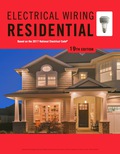18. A delta connected system has a line voltage of 220 volts and a line current of 100 Amperes. Draw the diagram and the line and phase voltages and currents. 19. The system in question 18 is changed to a wye system same line voltage and current. Draw the diagram and the line and phase voltages and currents. 20. A 110 to 12 volt transformer can take 220 volts input (Y/N) without damaging itself. The turns ratio N1/N2 is equal to 12/110 (Y/N). If any answer if N explain what is the correct answer.
18. A delta connected system has a line voltage of 220 volts and a line current of 100 Amperes. Draw the diagram and the line and phase voltages and currents. 19. The system in question 18 is changed to a wye system same line voltage and current. Draw the diagram and the line and phase voltages and currents. 20. A 110 to 12 volt transformer can take 220 volts input (Y/N) without damaging itself. The turns ratio N1/N2 is equal to 12/110 (Y/N). If any answer if N explain what is the correct answer.
Chapter28: Overcurrent Protection–fuses And Circuit Breakers
Section: Chapter Questions
Problem 10R: Using the method shown in this unit, what is the approximate short-circuit current available at the...
Related questions
Question
Please allow subparts either dislike sir ready..

Transcribed Image Text:18. A delta connected system has a line voltage of 220 volts and a line current of 100 Amperes.
Draw the diagram and the line and phase voltages and currents.
19. The system in question 18 is changed to a wye system same line voltage and current. Draw
the diagram and the line and phase voltages and currents.
20. A 110 to 12 volt transformer can take 220 volts input (Y/N) without damaging itself. The turns
ratio N1/N2 is equal to 12/110 (Y/N). If any answer if N explain what is the correct answer.
Expert Solution
This question has been solved!
Explore an expertly crafted, step-by-step solution for a thorough understanding of key concepts.
Step by step
Solved in 3 steps with 3 images

Knowledge Booster
Learn more about
Need a deep-dive on the concept behind this application? Look no further. Learn more about this topic, electrical-engineering and related others by exploring similar questions and additional content below.Recommended textbooks for you

EBK ELECTRICAL WIRING RESIDENTIAL
Electrical Engineering
ISBN:
9781337516549
Author:
Simmons
Publisher:
CENGAGE LEARNING - CONSIGNMENT

EBK ELECTRICAL WIRING RESIDENTIAL
Electrical Engineering
ISBN:
9781337516549
Author:
Simmons
Publisher:
CENGAGE LEARNING - CONSIGNMENT